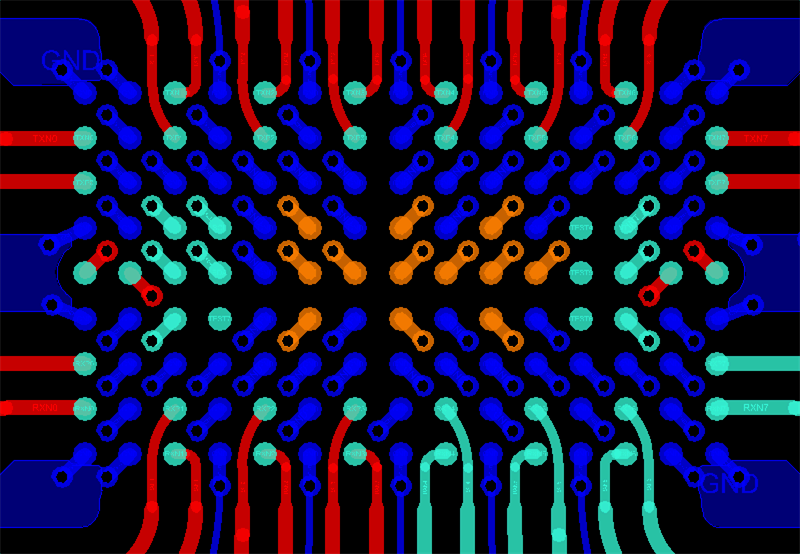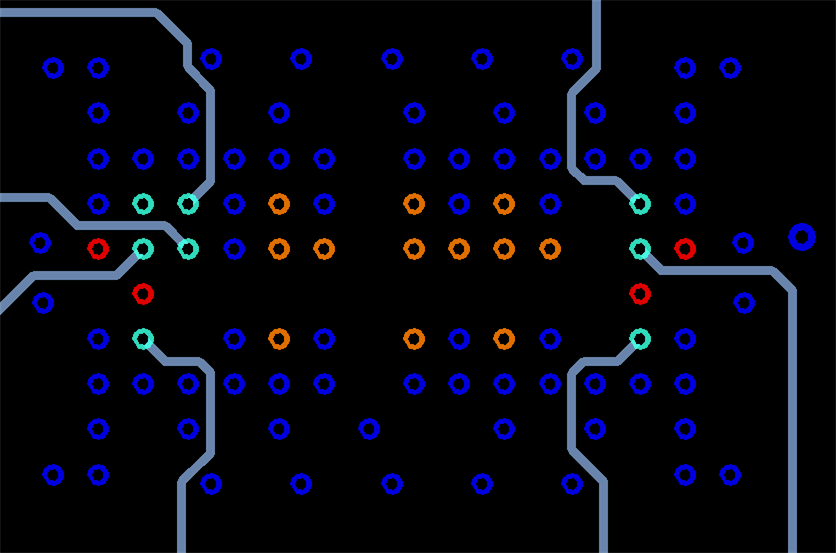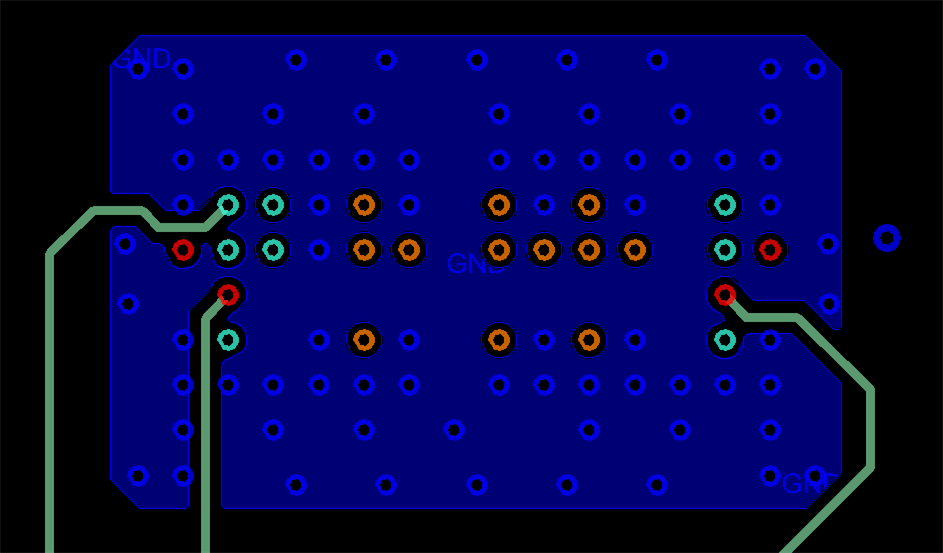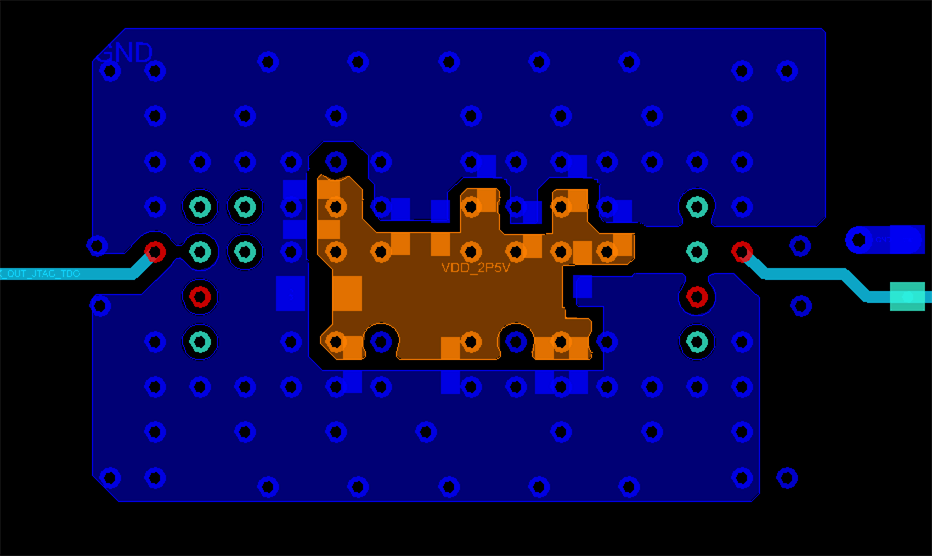SNLS542C October 2016 – December 2020 DS280MB810
PRODUCTION DATA
- 1 Features
- 2 Applications
- 3 Description
- 4 Revision History
- 5 Description (continued)
- 6 Pin Configuration and Functions
- 7 Specifications
- 8 Detailed Description
- 9 Application and Implementation
- 10Power Supply Recommendations
- 11Layout
- 12Device and Documentation Support
- 13Mechanical, Packaging, and Orderable Information
Package Options
Mechanical Data (Package|Pins)
- ZBL|135
Thermal pad, mechanical data (Package|Pins)
Orderable Information
11.2.2 Microstrip Example
The following example layout demonstrates how all signals can be escaped from the BGA array using microstrip routing on a generic 8+ layer stackup. This example layout assumes the following:
- Normal trace width: 0.27 mm (10.5 mil)
- Neck-down trace width: 0.18 mm (7 mil)
- Trace edge-to-edge spacing: 0.51 mm (20 mil)
- VIA finished hole size (diameter): 0.203 mm (8 mil)
- VIA-to-VIA spacing: 0.8 mm (31.5 mil)
- No VIA-in-pad used
Note that many other escape routing options exist using different trace width and spacing combinations. The optimum trace width and spacing will depend on the PCB material, PCB routing density, and other factors. Stripline escape routing is also possible and may be preferable in some application scenarios such as backplane applications.
 Figure 11-5 Microstrip Example, Top Layer
Figure 11-5 Microstrip Example, Top Layer Figure 11-7 Microstrip Example, Internal Signal Layer 2
Figure 11-7 Microstrip Example, Internal Signal Layer 2 Figure 11-6 Microstrip Example, Internal Signal Layer 1
Figure 11-6 Microstrip Example, Internal Signal Layer 1 Figure 11-8 Microstrip Example, Bottom Layer
Figure 11-8 Microstrip Example, Bottom Layer